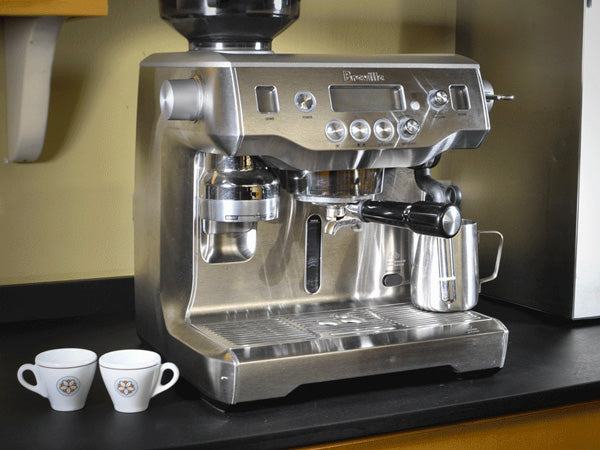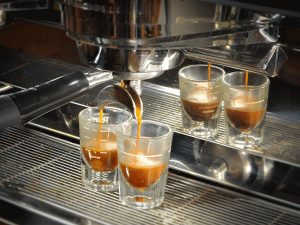 Here at Batdorf and Bronson, we often get asked about making espresso at home.
Here at Batdorf and Bronson, we often get asked about making espresso at home.
It seems like a simple enough question, but there is more to this century-old coffee extraction practice than you might think. According to Italian lore, to make espresso you need The Four Ms:
MacinazioneProper grinding, therefore, a good burr grinder, mistakenly it is often a second-thought during planning.
Miscela
The Blend referring to roasted whole bean coffee that is no more than two weeks past roast.
Macchina
The Machine usually occupies the spotlight of most home systems, often imitated, a good pump driven machine is a must.
Mano
Literally Hand, refers to the skilled hand of a barista.
When you get down to it, the cost, maintenance, and time required can be a big hurdle. If you are a true Espresso devotee and feel undaunted by the challenges, read on!

The oft-forgotten critical tool
Burrs are a must!Most people focus so much on the machine, they forget to budget for a capable grinder. Espresso requires a precisely fine grind, which can take several adjustments to achieve. Plan on going through a bit of coffee, just to calibrate the grinder each time you make espresso. We've already written a great explanation of grinder technology and what to look for in a good grinder, find it here.

TO SUM IT UP:

The "Star"

Espresso Machine Types

Accessories
The grinder and machine are not all. The following list contains the other must-have tools for producing the best espresso at home.



OUR ADVICE:
Work with a dedicated Espresso Machine retailer to find a proper machine for your budget and needs, we recommend:
The fresher, the better!
'Specialty' Quality Arabica coffee beans Carries a Q-Grade of 80 or Higher (Out of 100). The best quality coffee available is Specialty Coffee, tasted and rated by certified coffee professionals to ensure a flawless cup with desirable taste qualities.

Water: Feeding your machine bad water or plain tap water can ruin the machine and void warranties. Espresso machines dont like very hard water, they also don't work well with distilled water (your taste buds wont like the flavor either).Use filtered water (free of sediment, chlorine, metals, off odors) with a moderate amount of mineral content for machine health and great tasting espresso.

A great tasting espresso does not happen on its own even with the finest grinder, espresso machine, and coffee beans. The person preparing the espresso plays a huge role as well. Proper technique in preparation (dosing, leveling grounds, tamping, etc.) and good a brew recipe (coffee, water, time) are all under control of the barista (thats you!). Small missteps in preparation or brew recipe details can manifest themselves as very unpleasant flavors in the cup. Some training and practice will go a long way to getting more enjoyment out of your home setup.

Learning the craft is a rewarding experience.
More blog posts on the details of making good espresso, steaming milk, preparing cappuccinos etc. are on the way.



